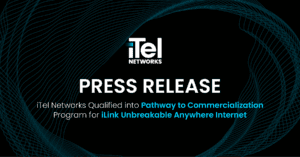If you’re not familiar with some of the terminology, the cost difference between business internet and residential internet options doesn’t make sense. After all, internet is internet… right?
There’s more to business internet than just plugging in a new router. Several factors differentiate a true business-class internet connection from what you have at home – and these differences can be a big deal! Businesses upgrading their internet services should consider the benefits of a business-class fibre connection. With business-dedicated fibre, your organization can lead the pack and gain a competitive edge.
Compare business vs residential internet:
Business Fibre
SLA
- A Service Level Agreement – or SLA – outlines the guaranteed bandwidth, uptime, and other metrics for your internet connection.
- If those guarantees aren’t being met, an SLA ensures that you have the power to negotiate the terms and pricing of your service.
- Business internet SLAs also include an MTTR (mean time to repair) that guarantees someone will be onsite fixing any issues within the promised time.
Static IPs
- Business internet service offers static IPs.
- Static IPs are needed for hosting your own network infrastructure, including file and mail servers.
- Static IPs are more reliable and secure.
Symmetrical
- Business fibre is symmetrical – this means that you can upload as fast as you download. As more businesses move to cloud services and video conferencing tools, having adequate upload speeds is more important than ever.
- Symmetrical connections are crucial for businesses that backup data to offsite centres. Having up-to-date backups are crucial to any disaster recovery – whether it’s a fire in the server room or a ransomware attack.
Dedicated Bandwidth
- Business fibre delivers bandwidth on a dedicated connection.
- “Dedicated” means your connection goes directly and only to your office location, aka, Point-to-Point (P2P). You don’t share bandwidth with neighbouring businesses.
- The result is faster speeds, less latency, and reduced packet loss.
Residential Fibre
No SLA
- You’ll share residential bandwidth with your neighbours. This means that service level agreements can only be an estimate as many things can impact the quality of your internet connection.
- Speeds will vary depending on the time of day and amount of online users – any bandwidth promises will only be an “up-to” availability.
- Shared, residential-quality services do not come with an MTTR guarantee. Some repairs can take days instead of hours!
Dynamic IPs
- Residential internet uses don’t generally require static IPs – so your IP will be dynamic.
- Dynamic IPs are the norm. They move and change without notice.
- Dynamic IPs are less reliable and not as secure.
Asymmetrical
Typical residential internet usage is mostly streaming video/music and web-surfing. These functions rely more on download speeds than upload, so residential internet is usually asymmetrical.
Shared Bandwidth
- Hundreds – or even thousands – of neighbours can be pulling bandwidth from the same port on a shared, residential connection – aka, Point-to-Multipoint or GPON.
- When everyone is online during peak hours, your connection slows down no matter what your usage looks like.
- With slower speeds, more latency and packet loss, you can see dropped calls and interruptions to other critical functions.
The Bottom Line
Just because a connection is called “fibre”, it doesn’t mean you’re getting the fast, reliable, and secure service associated with the name. Not all fibre connections are created equal, and you want to be sure you’re getting the quality you need. Businesses with 20+ employees all uploading to the cloud and using SaaS, video conferencing and more will want a true, dedicated business-class fibre connection.
At iTel, we’ve worked with businesses of all sizes in all industries. Contact us today to speak to an expert and start building out the custom network solution to take your business into the future.




